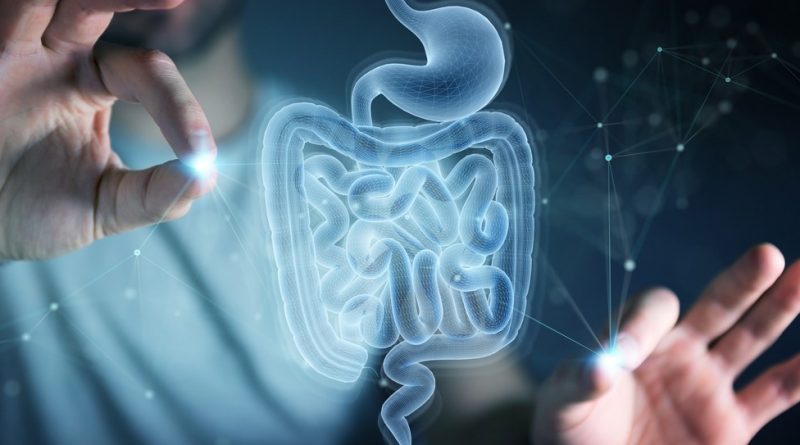Study examines role of exercise on gut microbiome in middle-aged adults
In a recent study published in the Federation of American Societies for Experimental Biology (FASEB) journal, researchers evaluate the effects of body mass index (BMI) on physical activity (PA)- and muscle/hand-grip strength-induced intestinal microbiome compositional alterations among middle-aged adult individuals.

Study: Physical activity-induced alterations of the gut microbiota are BMI dependent. Image Credit: sdecoret / Shutterstock.com
Background
Lack of physical exercise is associated with increased morbidity and mortality. In fact, PA is associated with various preventative and therapeutic health effects against inflammatory and cardiometabolic diseases.
Regular PA results in metabolic adaptations such as altered intestinal microbiota composition. Intestinal microbial dysbiosis influences weight by altered energy utilization from dietary sources. In addition, the symbiotic relationship between the host and intestinal microbiome optimizes lipid and glucose metabolism and immunological responses against inflammation.
Calorie-dense diets alter intestinal microbiota composition and functions by reducing the abundance and diversity of beneficial microbes such as Roseburia, Bifidobacterium, and Faecalibacterium. Comparatively, PA has been shown to increase beneficial microbe abundance and reduce pathogenic microbe counts, leading to increased short-chain-type fatty acid (SCFA) levels and enhanced lactate utilization.
However, the effects of regular PA on intestinal microbiome composition have not been well-characterized, as most previous studies comprised athletes consuming strict diets and participating in rigorous exercise training.
About the study
In the present study, researchers investigate whether alterations in intestinal microbiota composition by physical activity and hand-grip strength were affected by BMI values. The study cohort included individuals with normal BMI values within the range of 19 and 25 kg/m2 and those with elevated BMI values between 25 and 30 kg/m2.
The retrospective and observational study comprised individuals participating in Alberta's Tomorrow Project study. These individuals were randomly selected from over 50,000 participants and contacted through email or phone calls to participate in the present study.
Taken together, 443 persons, 72% of whom were female and 28% male, between 38 and 65 years of age, were enrolled for the present study based on their BMI, age, health status, and medical history. The team excluded pregnant females, individuals consuming antibiotics in the previous three months, and those who had cancer.
PA levels were assessed using the international PA questionnaire (IPAQ), hand-grip strength was assessed using hand dynamometers, and diets were considered using the Canadian dietary history questionnaire II (CDHQ-II). In addition, serological samples were subjected to lipidomic analysis.
Deoxyribonucleic acid (DNA) was isolated from fecal samples and was subjected to microbiota analysis. The intestinal microbiota was assessed using 16S ribosomal ribonucleic acid (rRNA) sequencing. Alpha diversity was calculated using the Shannon Diversity Index and beta diversity using Bray-Curtis dissimilarity metrics.
Omics eBook

Data were obtained on PA and diets through self-documented questionnaires.
Results
The average age of the study participants was 57 years old, 75% of whom were female.
Overweight individuals exhibited greater triacylglycerol (TG) levels and lower levels of lysophosphatidylcholine (LPC) lipids, cholesteryl esters (CE), and sphingomyelin (SM) than individuals with normal BMI values. Overweight individuals also exhibited reduced Oscillibacter and greater Dialister abundance. The effects of PA on the intestinal microbiota were dependent upon BMI values.
Among non-obese individuals with normal BMI values, greater physical exercise durations were associated with elevated counts of commensal microbes, including Proteobacteria, Actinobacteria, Prevotella, and Collinsella species, and reduced counts of Verrucomicrobia species. Among non-obese males, greater muscle strength was related to increased F. prausnitzii and Faecalibacterium abundance compared to those with low muscle strength. Overweight individuals had greater alpha diversity than those with normal BMI values.
Higher PA levels were associated with lower alpha diversity in non-obese individuals. Normal-BMI men, but not women, exhibited a greater Faecalibacterium abundance associated with higher PA levels.
Faecalibacterium prausnitzii counts were more significant in non-obese men and overweight women with greater hand-grip strength. Negative correlations were observed between BMI, TG levels, and Oscillibacter abundance, whereas positive correlations between physical activity duration, intensity, phosphatidylcholine, LPC, CE lipids, and Prevotella abundance were observed.
Oscillibacter produces health-promoting metabolites such as butyrate through dietary fiber fermentation. Elevated Dialister counts are related to glucose intolerance and resistance to weight loss.
Actinobacteria promote health due to their glucose-to-acetate conversion abilities, associated lower cholesterol levels, and complex carbohydrate digestion. Collinsella species improve gut barrier functions and have anti-inflammatory properties due to their butyrate-producing ability.
Reduced F. prausnitzii counts have been associated with type 2 diabetes and obesity. As a result, F. prausnitzii supplementation has been shown to increase adiponectin signaling, muscle mass, and oxidation of fatty acids.
Conclusions
The study findings show that BMI significantly influences PA-induced alterations in intestinal microbiota composition. Alpha diversity increased among normal-weight and overweight adult individuals with moderate increases in physical exercise durations, whereas compositional alterations were primarily observed among normal-weight individuals.
Gender-specific relationships between muscle strength and gut microbiome were observed, particularly for Faecalibacterium prausnitzii. These findings indicate that even small increases in PA duration by overweight individuals can improve beneficial microbe abundance and diversity in the intestines.
The greater TG levels and lower CE, LPCS, and SM levels among overweight individuals indicated an elevated risk of cardiometabolic diseases compared to healthy individuals.
- Shah, S., Mu, C., Moossavi, S., et al. (2023). Physical activity-induced alterations of the gut microbiota are BMI dependent. The FASEB Journal 37. doi:10.1096/fj.202201571R
Posted in: Men's Health News | Medical Research News | Medical Condition News | Women's Health News
Tags: Adiponectin, Anti-Inflammatory, Body Mass Index, Cancer, Carbohydrate, Cardiometabolic, Cholesterol, Diabetes, Digestion, DNA, Dysbiosis, Esters, Exercise, Fatty Acids, Fermentation, Glucose, Glucose Metabolism, Inflammation, Lipids, Metabolism, Metabolites, Microbiome, Mortality, Muscle, Obesity, Physical Activity, Ribonucleic Acid, Triacylglycerol, Type 2 Diabetes, Weight Loss

Written by
Pooja Toshniwal Paharia
Dr. based clinical-radiological diagnosis and management of oral lesions and conditions and associated maxillofacial disorders.
Source: Read Full Article
